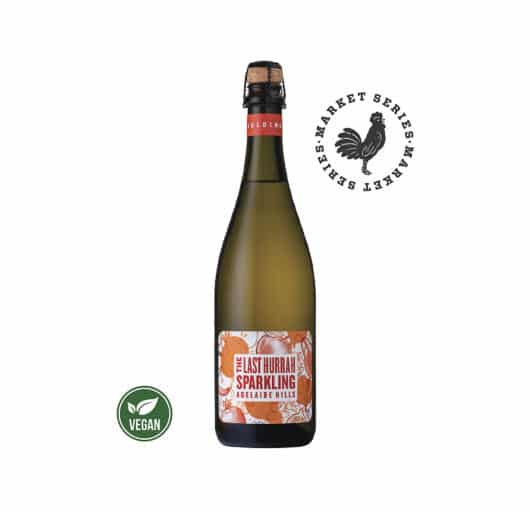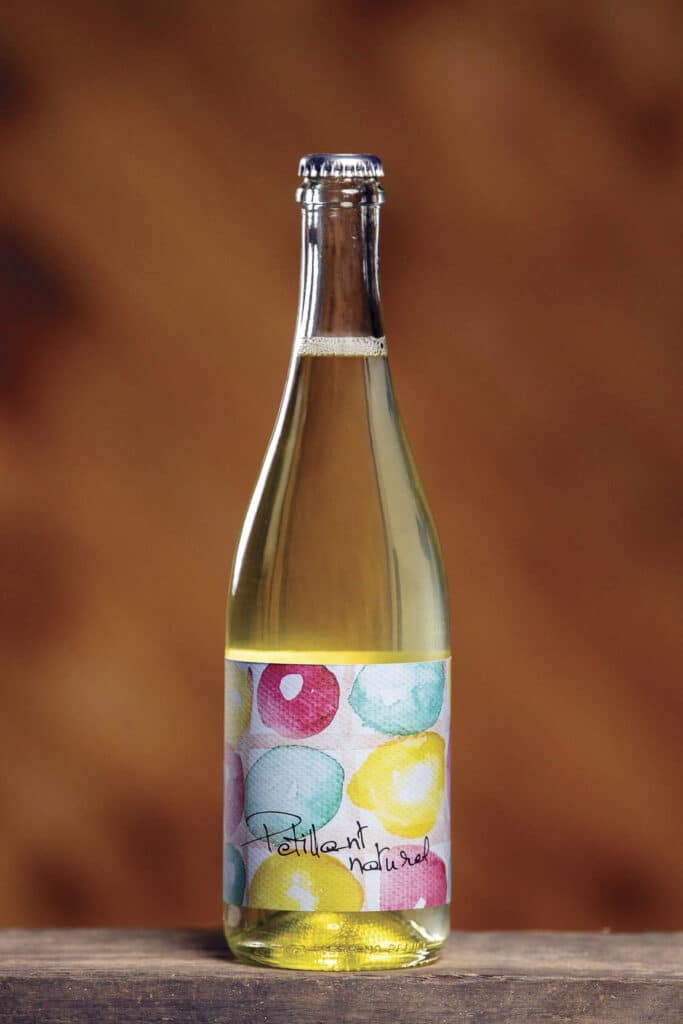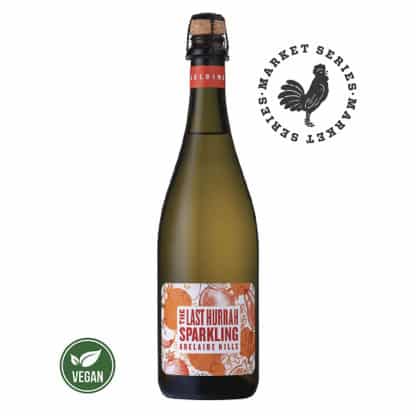WINE
Summertime Fizz – The Perfect Drink For Summer

WORDS: Peter Panousis - Peter Pan Wines PHOTOGRAPHY Supplied
Sparkling wines provide the perfect kickstart to any occasion but none more so than summertime, with its many festivities including end-of-year parties, Christmas Day and New Year’s Eve, just to name a few. A very special time of year to pop a cork!
As a nation, we are serious consumers of sparkling wine with over 85 million bottles sold in Australia as cited by Tyson Stelzer’s Australian Sparkling Report. In a recent article in the National Liquor News magazine dated November 2022, Australia is a significant sparkling wine market with $1.3 billion in sales, ranking number seven globally to that of the USA market being the strongest consumers, selling around $6 billion. Specifically, the Australian market is broken down to 55 per cent of the value sold in domestic sparkling wine and 45 per cent imported, which is mainly Champagne and Italian sparkling.
According to IRI MarketEdge, the value of sparkling wine sales in the Australian off-trade market grew by 22 per cent in 2020–21 and five per cent in 2021–22. Domestic sparkling wine sales grew by 14 per cent and three per cent respectively over the same period. Imported sparkling wines grew by higher rates of 34 per cent and six per cent, driven by sales of Champagne.
Is there are difference between Sparkling Wine and Champagne?
Champagne is a sparkling wine that comes from the area of Champagne in France. But let’s be clear, not all sparkling wine made in France is Champagne. The French make many sparkling wines from all over their great country using various grape varieties and this non-Champagne is called Cremant – a process involving gassing the juice with CO2 or using the Champagne method which is called Method Traditionelle. This process involves creating the fizz or bubbles naturally in the bottle like Champagne. But I digress, legally Champagne is made from one or a combination of three permissible grape varieties. They are Chardonnay (white grape), Pinot Noir and Pinot Meunier (both red wine grape varieties) and are grown extensively in the Champagne region, however, four other varieties can be used but are not common in the making of Champagne. If Champagne is made from just Chardonnay it is called a Blanc de Blanc (white from white) or if made with the Pinots it is called Blanc de Noirs (or whites from blacks). These two terms can be used to refer to Sparkling wine styles too.
Sparkling on the other hand refers to any wine with bubbles, which may be sweet, dry, rose, red, or white in colour but unlike Champagne it can be made from virtually any grape variety like Colombard, Riesling, Chenin Blanc, Sauvignon Blanc, Shiraz etc. or a mixture of many varieties and using varied methods of production and that is not a Champagne.
How is Sparkling Wine and Champagne Made?
Sparkling wine including Champagne is regarded as the most technically advanced wine in the world according to Madeline Puckette (of Wine Folly). Specifically, Wine Folly states “What makes the stuff so technical is that it undergoes not just one fermentation (to make the alcohol) but a second fermentation to make the bubbles! Throughout the entire winemaking process, the winemaker has a lot of choices to make that will greatly affect the way the final wine tastes.”
Champagne is made using Methode Traditionelle and relies on fermented grape juice, followed by the addition of yeast and sugar to individual bottles to create the required bubbles over a period of many months (usually 15 months for non-vintage by law, and 3 years for vintage wine). This method produces wine that is complex and layered with loads of toasty, developed characters. Once the allotted time is reached, the dead yeast cells are removed and the bottle is topped up with more wine and a mixture of sugar liquor (called dosage), and then the bottle is resealed by cork. A time-consuming and expensive process, but all class to be sure.
A second way of making sparkling wine is called the Transfer Method. This method involves fermenting the wine, adding yeast and sugar to create the bubbles like above and after a period of time (usually six months or more), transferring the wine to a pressurized stainless steel tank. The wine is bottled under pressure and sealed.
A third way is the Charmat Method. This is where both primary and secondary fermentation is created in a pressurized tank. Sparkling wine is created very quickly and cheaply. These wines are bright, simple and fresh. Most Prosecco and Moscato undergo this process.
Another method which pre-dates Champagne receiving much attention in recent years is pétillant-naturale or pét-nat as it is affectionately known amongst the cool cats. Here, wine is bottled prior to fermentation where the fizz is created by the natural sugars left in the ferment. The wine is crown sealed (a beer cap) with no filtering or fining or added dosage of sugar liqueur thus making the wine cloudy and as natural as you can find.
Note, there are other types of sparkling wines from around the world for example, the Spanish sparkling wine is called Cava which can be made in both the Charmat or Methode Traditionelle, and the Italians call their sparkling wines Franciacorta (made like Champagne) and Prosecco, while the Germans love to create sparkling Rieslings called Riesling Sekt just to outline a few.
Is sparkling wine dry or sweet?
Technically, sparkling wine including Champagne can be made to many degrees of sweetness, dry to sweet, and in between. The French have a very strict way of categorizing sweetness and the rest of the world uses these terms to describe levels of sweetness on wine labels. The levels/terms of dry to sweet are: Extra Brut or Brut Nature which contains about 0 – 6 grams of sugar per litre. Remember red wine is normally around 1 gram of sugar per litre – with Brut Nature being less than 3 grams thus making it dry; Brut has around 6 to 12 grams of sugar per litre. At this level of sweetness, you will find many of the very best and most recognizable Champagnes with this level of dryness/sweetness in the market; Extra Sec styles contain around 12 – 17 grams of sugar per liter, and at this level, one will notice the sweetness on the palate; Sec style has a level of sweetness that is quite sweet at 17 – 32 grams of sugar per liter, fabulous with Asian or spicy dishes but I’m not fan of drinking this level of sweetness without food; Demi-Sec style has approximately 32 – 50 grs per liter, it’s very sweet; and finally Doux style with over 50 grams of sugar per liter, I don’t see many nowadays but great with dessert.
For Prosecco, there are only three levels of sweetness Brut, Extra Dry and Dry, with Dry being the sweetest. Here is how it works, If you prefer your Prosecco in a drier style, you want to be looking for ‘Brut’, which is allowed up to 12 grams of residual sugar per litre, ‘Extra Dry’ means it has 12-17 grams per litre and ‘Dry’ can be 17-32 grams per litre. Sadly, there is a consumer myth that Prosecco is sweet when technically it is not, but rather quite dry. In fact, Prosecco can be much drier than many of the Champagne styles.
Other terms used in Sparkling Wine/Champagne
Cuvée on a label can have multiple meanings. For example, it may denote the first press – the first extraction of the grape juice meaning the best or purist juice. On the other hand, Cuvée may mean a blend of juice like different vintages, different blocks of sourced grapes, or different barrels used etc. Non-Vintage usually means sparkling wines that have been made from a blend of wines made from very different years or vintages. Vintage with a year shown means the year the grapes were harvested. The word Spumante on a wine label basically means the wine is an Italian sparkling wine made in either the Method Traditionelle or Charmat Method and is not a classification of sweetness. Frizzante means a semi-sparkling wine usually with about half the fizz of normal sparkling wine – so fewer bubbles. Col Fondo is mainly associated with Prosecco and means unfiltered, unfined and without any additions. The result is a dryer Prosecco with a cloudy appearance and a more complicated palate.
What to drink?
In Champagne, try Canard-Duchene Authentic Brut. The house was established in 1868 and produces cracking good Champagnes. The story goes this house was born out of love where Victor Canard, a barrel-maker, and Léonie Duchêne, a grower’s daughter become lovers and eventually created the Canard-Duchene House. The house received the Trophy for the Best Sparkling Winery in 2012 and bears the Russian Imperial Family’s coat of arms on all their labels. The Brut which is a stunner and a pure aperitif style has 7 grams of sugar and is made of 40% Pinot Noir, 40% Pinot Meunier and 20% Chardonnay. Strawberry and green apple on the nose and palate, crisp and clean to the finish. Just yum!
In Prosecco look out for Salatin Extra Dry Prosecco DOC. Salatin is a 75-hectare property/winery in the Treviso region of Veneto and has a 500-year family history. The grapes are grown in the UNESCO-listed Prosecco Hills of Grave del Friuli and DOC Venezia. The wine is made from 100% Glera grapes and has aromas of green apples and grapefruits while the palate is full-bodied with pleasant crisp acidity, extra dry to the taste and made using the Charmat Method.
Next try Rosnay’s “Pétillant Naturel”, a sparkling but not just any sparkling. Rosnay is Canowindra’s (near Cowra in western NSW) first organic vineyard and farm and is only just eight kilometres from the centre of town. The farm was established in 1977 by Richard and Florence Statham and their sons Sam, Nick and Oliver. The wine is made from 100% Chardonnay and is crown-sealed (a beer bottle cap) with no filtering or fining or added dosage thus making the wine cloudy and as natural as you can get. The wine is vibrant, fruity and spritz with no sulphites, added yeast, fining agents or any other additives, and is also low in alcohol. Easy to drink and refreshing, this wine pairs well on its own or with fried and or salty foods.
Finally, try Golding’s Last Hurrah Sparkling. The Golding family story began in the Adelaide Hills three generations ago as market gardeners but it was not until 2002 did the Goldings decide to create a winery and the Golding wine label was born. The property has 27 hectares of vines growing Sauvignon Blanc, Pinot Gris, Chardonnay, Pinot Noir, Gamay, Cabernet Sauvignon and Shiraz. The wines are made by the very capable Tash Mooney of notable Fox Gordon fame. The Last Hurrah sparkling is made with 50% Pinot Noir and 50% Chardonnay grown and sourced from Lenswood in the Adelaide Hills. The wine has 9 grams of sugar and with strawberry and crunchy green apple on both the nose and palate. The wine finishes clean and crisp and is delicious. A real crowd pleaser.
Enjoy happy but safe drinking. You can catch Peter on Facebook abd on Twitter & Instagram as @peterpanwine











